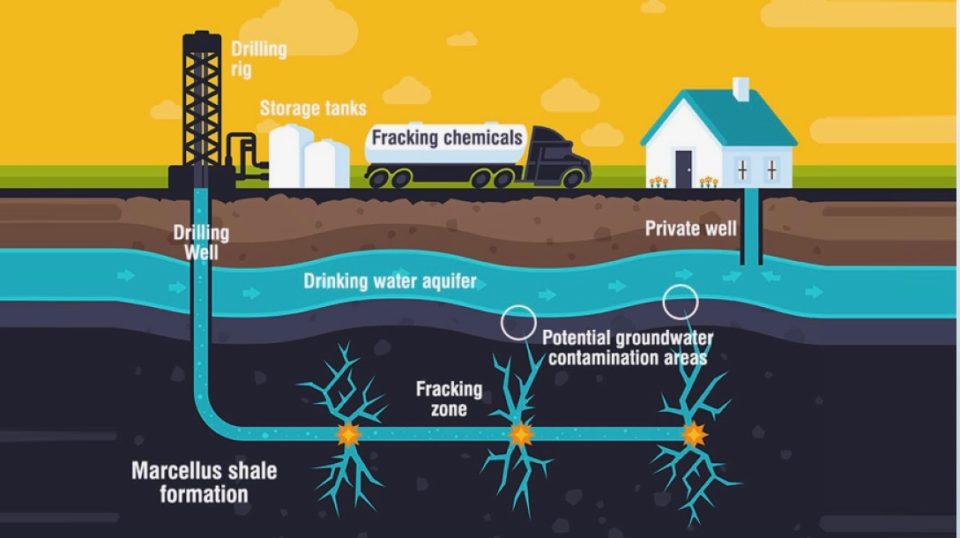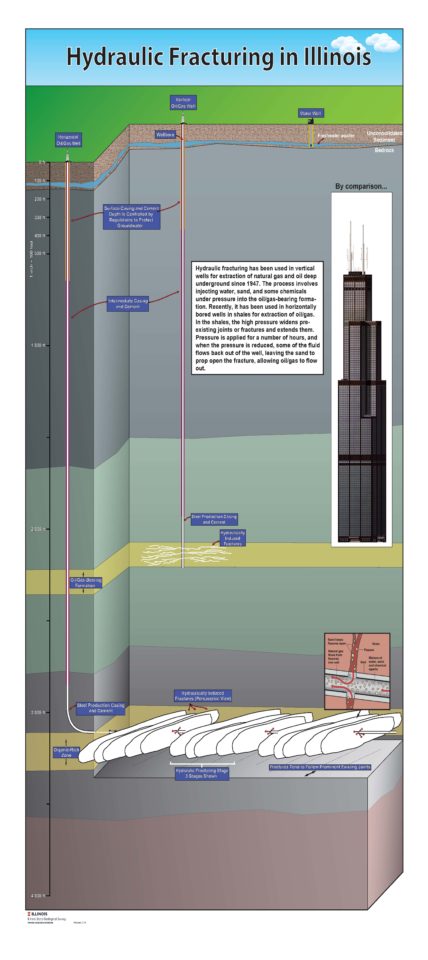Depth Deception: How Activists Mislead Students and Educators on Well and Hydraulic Fracturing Depths
The following cartoon-like depiction of the hydraulic fracturing (“fracking”) process is currently being distributed to West Virginia schools by a retired educator-turned-“Keep It In the Ground”-activist.

The depiction shows the “fracking zone” – the area where hydraulic fracturing treatments occur in a horizontal wellbore – as being just below the water table, with fractures nearly extending into the above drinking water aquifer.
This depiction could not be more misleading and is intended to perpetuate the myth that fracking – both of the high volume horizontal variety that occurs in places like Texas, Pennsylvania and North Dakota, and the vertical well application that has been widely used in Illinois since the 1950s – is an inherent threat to groundwater. A similarly inaccurate depiction was also circulated to schools in a 2017 issue of the publication Junior Scholastic.
The reality of typical hydraulic fracturing and oil and gas well depths is reflected in the following Illinois State Geological Survey (ISGS) graphic (click image to enlarge).
The ISGS graphic accurately shows that the depth in which hydraulic fracturing occurs on conventional horizontal wells in Illinois far exceeds the height of the 110-story Willis Tower in Chicago.
It also shows the depth in which high volume hydraulic fracturing of horizontal wells in Illinois’ New Albany Shale – a practice has yet to take place in the Land of Lincoln – would occur at even greater depths than conventional vertical wells.
Not only is hydraulic fracturing conducted at tremendous depths below freshwater aquifers, thousands of feet of impenetrable rock separate the production zones being fractured from the freshwater aquifers above. It is simply physically impossible to generate enough energy to create fractures that extend thousands of feet vertically into freshwater aquifers.
Even the U.S. Environmental Protection Agency’s landmark 2016 hydraulic fracturing study concluded that,
“[H]ydraulic fracturing operations are unlikely to generate sufficient pressure to drive fluids into shallow drinking water zones.”
A 2012 peer-reviewed paper by research firm Gradient concluded,
“[T]here is no scientific basis for significant upward migration of HF fluid or brine from tight target formations in sedimentary basins.”
A second peer-reviewed paper from Gradient, featured in the journal Geophysical Research Letters, echoed these findings. The study concluded:
“It is not physically plausible for induced fractures to create a hydraulic connection between deep black shale and other tight formations to overlying potable aquifers…”
That EPA study also notes that the median hydraulic fracturing treatment in the United States occurs 8,000 feet below the surface.
So, suffice it to say, the average K-12 student would never get the impression that fracking typically takes place thousands of feet below aquifers based on the graphic this particular activist chose to use.
The reality depicted in the ISGS graphic illustrates why no fewer than 31 scientific studies – including 17 peer-reviewed studies and nine reports commissioned by regulatory agencies – have concluded fracking is not a major threat to groundwater.

